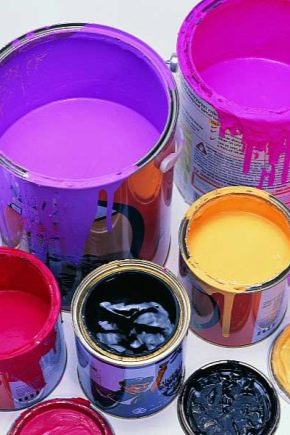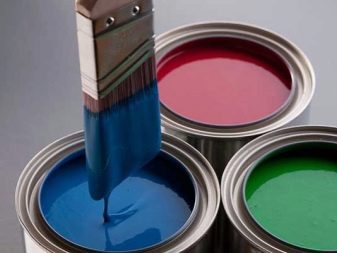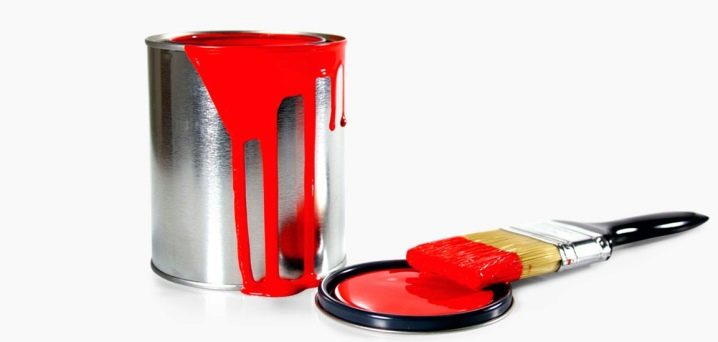What is the difference between latex and acrylic paints?

Not all people, when planning a renovation, pay special attention to the choice of material. As a rule, for the majority, they become important already in the store, at the time of purchase. But analyzing the different options prematurely would save you a lot of money. For example, if we are talking about paints for wallpaper, it is imperative to know what is the difference between latex and acrylic paints, what is their difference, so as not to let this issue catch you by surprise already in the store.


Comparative characteristics of materials
Latex
It should be mentioned that latex is a natural material obtained from the sap of rubber plants. And this immediately provides non-toxicity and safety to latex paint. Of course, there is also artificial latex, which are polymers (as a rule, styrene-butadiene acts as a polymer) with adhesive properties. In general, to be honest, latex is not a material, but a special state of a substance or a mixture of substances. This condition is called water dispersion, in which the particles of the substance are suspended in water for the best adhesion to the surface.



Latex paint is dirt-resistant and does not accumulate dust, moreover, forms a dust-repellent surface. It allows air to pass through, "breathes", which is especially important if the residents suffer from lung diseases, for example, asthma, or if they have small children, or family members suffer from allergies. This property of the material has a positive effect on the appearance of the coating, because in this case, oxygen bubbles do not form on the surface.


By the way, the paint has a high degree of elasticity, which allows it to be applied on surfaces with not very smooth relief.

It dries quickly, which is important in limited time conditions (the second layer can be applied after a couple of hours) and is easy to clean, including with a wet method. Therefore, removing even the most stubborn dirt is usually not particularly difficult.


Latex paints are widespread: they are used both for painting walls, floors and ceilings in households, and for the facades of offices of companies, large manufacturing firms or factories.


Of course, one cannot fail to mention the huge palette and large selection of textures. For example, you can find latex paints both matte, without shine, laying perfectly flat on the surface, and with a fairly noticeable shine.

Acrylic
Acrylic paints are divided into several varieties. The first is pure acrylic (acrylic resin), which has a number of advantages: it has increased elasticity, excellent strength, and physical characteristics, resistance to ultraviolet light and temperature fluctuations, protection against corrosion and other "diseases" of the walls. This option is quite expensive, but it can be used in any climate and even for painting facades.


The second is paints made on the basis of acrylic copolymers with the addition of either silicone, or vinyl, or styrene. They are called acrylate. Lower cost and less versatile.

Let's consider each option in more detail:
Acrylic-polyvinyl acetate
Found application on the ceiling, so if you are going to purposefully paint it, we advise you to pay attention to the paint based on acrylic with the addition of vinyl. This paint has another name - water emulsion. In very simple words, the paint is made of PVA.


It is completely odorless, mixes easily, has a liquid consistency and is easy to apply, and its main difference is adhesion to the surface. She is simply amazing, however, at the same time, short-lived: over time, the paint is washed off, especially if you often use wet cleaning. At high humidity, this paint tends to wash off, even if it has already dried. Moreover, in this case, it can leave marks on clothes and objects, therefore it is not used for painting facades, it is most often used for painting hard-to-reach or inconspicuous places.



It also does not tolerate frost well, which means that the ideal climate for using such paint is dry and sunny. This paint is perhaps the cheapest option of all acrylic paints. And the most popular because of its low price, but quite capricious.

Acrylic-butadiene-styrene
Unlike its vinyl counterpart, styrene-butadiene acrylic paints easily tolerate humid climates and high humidity. If you look closely at the name, it becomes clear that this paint is a symbiosis of an acrylic base and an artificial analogue of latex - styrene butadiene.

The price of a latex substitute here gives the paint a fairly affordable cost., and the base made of acrylic gives increased wear resistance, which, in turn, increases the possibilities of using paint. Among the disadvantages, one can single out susceptibility to fading - the symbiosis of acrylic and latex does not tolerate ultraviolet light and can only be used in rooms where there is little sunlight, for example, in corridors or bathrooms.


Acrylic Silicone
They are a mixture of acrylic and silicone resins. The most expensive of the presented acrylic paints and for a reason. Perhaps the price / quality ratio is quite justified here, because, unlike acrylic-vinyl and acrylic-latex, this type is not subject to either fading or high humidity. It is even vapor-permeable, water-repellent and can "breathe", the appearance of mold and other microorganisms on the surface covered with silicone paint is minimal.

Perhaps this is one of the few types that are suitable for painting the facades of buildings. Due to its elasticity, it can be used to mask small (about 2 mm) cracks. You should not expect much more, this is already one of the best indicators of elasticity. Among the disadvantages is the specific smell of an uncured mixture and a long drying time.



You will learn more about the properties, features, subtleties of applying acrylic paint in the following video.
Which one to choose?
Of course, the main difference between these two types of paints is their composition - for acrylic, these are actually acrylic polymers with the addition of certain substances, for latex, either a rubber base, or an artificial one from styrene-butadiene.

Acrylic paints are often called more stable and better quality than latex paints, but they also have a higher price. In fact, the performance characteristics of both paints are roughly the same: for acrylics, perhaps a little better, but completely insignificantly. The main difference is color and price.

Moreover, it is likely that, after taking a closer look at the performance characteristics of latex paint, you decide that you do not need acrylic - there is no need for such a long service life or you often change the atmosphere in the house and the appearance is more important to you. Latex paint with its huge variety of textures is, of course, ready to provide you with a beautiful design. Perhaps it is this variety that distinguishes latex paint from its counterparts.



There is also another interesting option on the market such as an acrylic latex blend., also known as "styrene butadiene acrylic paint". It is an acrylic emulsion with the addition of latex. This option will come out cheaper than conventional acrylic paint.


When buying, be sure to pay attention to the manufacturer and reviews of his product, which can be found on the Internet.For example, the most popular firms are: Turkish company Marshall, German Caparol, domestic Empils, Finnish Finncolor and Parkerpaint from the States.
Also, do not leave unnoticed information on the label - highlight the main thing that relates directly to the properties of the paint, the method of application and application, shelf life and precautions, regardless of the attractive epithets.

For rooms with high humidity, especially kitchens and bathrooms, acrylic (not acrylate, but one that contains only acrylic fibers) paint or latex, as well as acrylic-latex, is suitable. For living rooms (especially children's and bedrooms) or rooms where allergy sufferers and people suffering from lung diseases are often found, environmentally friendly latex paint, best of all made in Finland, Denmark or Norway, is suitable. It is in these countries that strict control over the use of safe dyes is carried out. If the climate in your bedroom is not humid, you can purchase a water-based emulsion - acrylic mixed with vinyl.



For living rooms and corridors, you can choose any of the proposed options, focusing on the indoor climate. When it comes to rooms with high traffic (kitchen, corridors), it is better to opt for acrylic-latex paint. Although purely acrylic, although it seems too expensive, it will perfectly cope with even the most difficult conditions, including mechanical damage.














The comment was sent successfully.